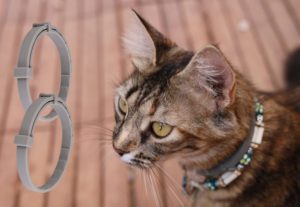Are you a cat owner wondering whether you should brush your feline friend? A renowned cat behaviorist Jackson Galaxy, known as the “Cat Daddy,” discusses the significance of Brushing Your Cat in his YouTube video. This blog post will discuss Jackson’s video insights and offer tips on incorporating brushing into your cat’s routine.
Brushing Your Cat: Long-Haired or Short-Haired
Jackson Galaxy says that brushing your cat, whether long-haired or short-haired, is an essential part of their grooming routine. Regular brushing helps keep your cat’s coat clean and healthy and strengthens the bond between you and your feline friend.
Many cat owners may assume that short-haired cat breeds don’t require brushing, but this isn’t the case. Here’s why:

1. Mats Prevention:
For long-haired cats, brushing is crucial to prevent mats in their fur. Long-haired cats are more prone to matting their skin. Mats are clumps of hair that can be formed on any part of a cat’s body. Without taking care of it, it can be painful for your cat, especially when it forms close to the skin. Over time, mats can cause discomfort and lead to more serious issues, such as abscesses.
2. Sebaceous Gland Stimulation:
Brushing stimulates the sebaceous glands in your cat’s skin. These glands produce oil that keeps the coat shiny and helps cats clean themselves effectively. This can reduce the formation of dander, which is excellent for your cat and your allergies.
3. Injury and Flea Detection:
Regular brushing sessions allow you to closely inspect your cat’s skin and fur. You can identify injuries, such as minor wounds from cat fights, or detect signs of fleas and other pests early on. This proactive approach to cat care can save you from dealing with more significant issues later.
Understanding Your Cat’s Preferences before Grooming Your Cat
Brushing a cat’s entire body may only sometimes be well-received by some cats. If the brushing is done excessively, the cat may resist. Take, for instance, Lola May, a cat featured in a video. She enjoys brushing her face, but she becomes overstimulated when her owner tries to brush other body parts. Jackson Galaxy explains this phenomenon as follows:
Hair Follicle Receptors:
Cats have hair follicle receptors that act like sensory antennas. These receptors register sensations and can quickly go from pleasurable to overstimulating. Once a cat becomes overstimulated, brushing can turn into an uncomfortable experience.
Cat Tail Swishing:
When brushing your cat, pay attention to its tail. If it starts swishing aggressively, it’s a sign of agitation. Continuing to brush can create negative associations with the process.
The Art of Rewarding and Timing for Brushing Your Cat

Most cat owners know treating is an important part of cat care. However, in his YouTube video, Jackson Galaxy suggests an intelligent approach to brushing that involves timing and rewarding. Using his advice, here’s how you can make brushing a more pleasant experience for your cat:
1. Timing for Brushing your cat: When brushing your cat, choosing the right time to do so is essential. It would be best to brush your cat when they’re calm and relaxed rather than when they’re hyperactive or playful. This will make the process much easier for you and your feline friend.
Additionally, it’s a good idea to start with short brushing sessions and gradually increase the time as your cat becomes more comfortable with the process. Remember to gently reward your cat with treats and praise to encourage a positive experience.
2. Rewarding: When brushing your cat, making it a positive experience is essential. According to Jackson, one way to do this is by rewarding your feline friend with treats or affection after the grooming session, not before.
This will help condition positive associations with brushing, making it more enjoyable for your cat and easier for you. Additionally, consider using a soft-bristled brush and starting slowly to ensure your cat is comfortable. You can help your cat maintain a healthy and happy coat with patience and positive reinforcement.
3. Separate the Ritual: When it comes to grooming your cat, it’s important to establish a separate time for brushing. This way, your cat won’t associate brushing with playtime or feeding and will be less likely to expect treats during the grooming session.
Additionally, using the right tools and techniques when brushing your cat’s fur is important. Start with a brush appropriate for your cat’s coat type, and work in gentle, circular motions. Please pay attention to any mats or tangles and gently remove them with a comb or specialized tool. Consistency is key, so aim to brush your cat at least once a week to keep their coat healthy and shiny.
Selecting the Right Brush for Grooming Your Cat
One of the important factor to brushing your cat is the choosing right brush. Jackson Galaxy recommends using a slicker brush with metal teeth for brushing. This type of brush effectively detangles hair and removes loose fur. However, he mentions various kinds of brushes available, including those with spaced-out tines made of bamboo or wood. Finding the brush that works best for your cat’s coat and preferences is essential.
Stress Stopper: An Aid for Overstimulated Cats
For cats like Lola May, who become overstimulated during brushing, Jackson introduces a “Stress Stopper.” This product can be applied to your cat both before and after brushing. It helps calm them down and reduces any post-brushing agitation.
Conclusion
Brushing your cat is not only about maintaining their fur; it’s a holistic practice that promotes their well-being. By understanding your cat’s preferences, timing your sessions right, and using the right tools, you can make brushing a positive experience for you and your feline companion.
With a passion for cats and years of experience in cat care and grooming, I have gained valuable insights and expertise that I want to share with other cat lovers. I believe that every cat deserves the best care possible, and through this platform, I aim to empower cat owners like you to provide the utmost love and care for your feline companions.
No related posts.



